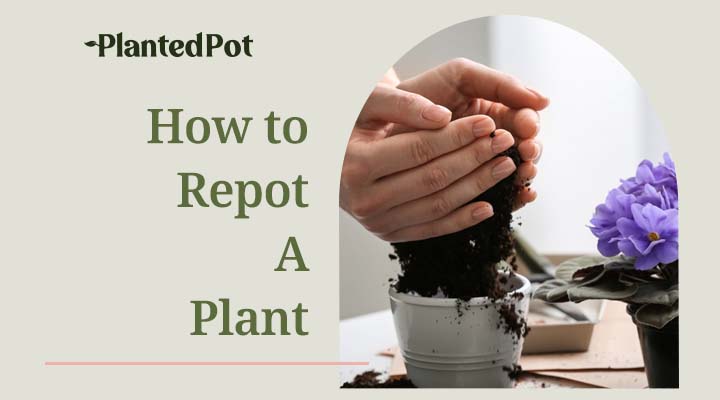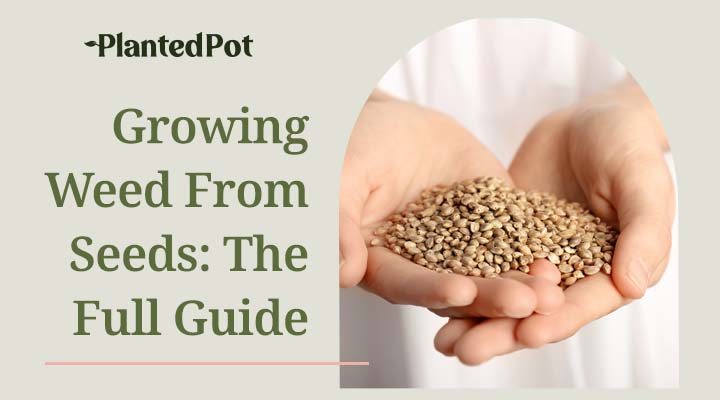
Pilea Care: How to Look After The Native Himalayan Plant
Home / Pilea Care: How to Look After The Native Himalayan Plant
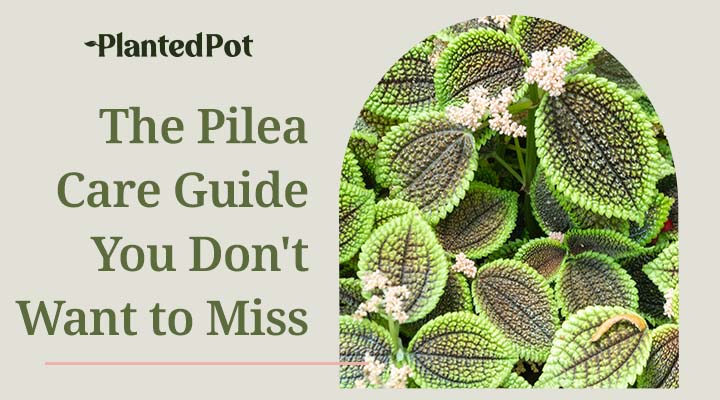
Pilea Care: How to Look After The Native Himalayan Plant
- Olivia Richman
- March 26, 2021
- 11:03 pm
- No Comments
Looking for a beautiful, bright plant with eye-catching round leaves? Looking for luck? The Pilea Plant is most definitely the plant for you! Despite its exotic looks, Pilea Plant care is surprisingly easy. This is a low-maintenance plant that provides a lot of benefits.
While the most obvious benefit is the Pilea Plant’s gorgeous looks (which will quickly transform any room), the Pilea Plant also has many health and wellness benefits. It might even have some money-related benefits as well… More on that soon! This is definitely a plant you want to have around!
What is a Pilea Plant?
The Pilea Plant has big, round green leaves at the end of thin, springy stems. It’s no surprise that it caught the attention of families living in the Yunnan Province of Southern China, who kept it in their homes as an ornamental plant after seeing it grow in its native environment at the foot of the Himalayas.
The Pilea Plant’s pad-like foliage has easily lent itself to many nicknames. It’s also known as the Chinese Money Plant, the UFO Plant, the Coin Plant, the Friendship Plant, and the Missionary Plant. In 1912, samples were collected from China’s Tangshan mountain range, which rises almost 14,000 feet. But it was soon forgotten about.
In 1946, a missionary in Norway brought the plant over and distributed it to friends. It soon became famous the world over and was commercially grown in the late 2010s. With its waxy, circular leaves, the Pilea Plant has become very desirable in homes everywhere. It’s beautiful but also very easy to care for. It’s pretty low maintenance, which makes it a great addition to any indoor environment.
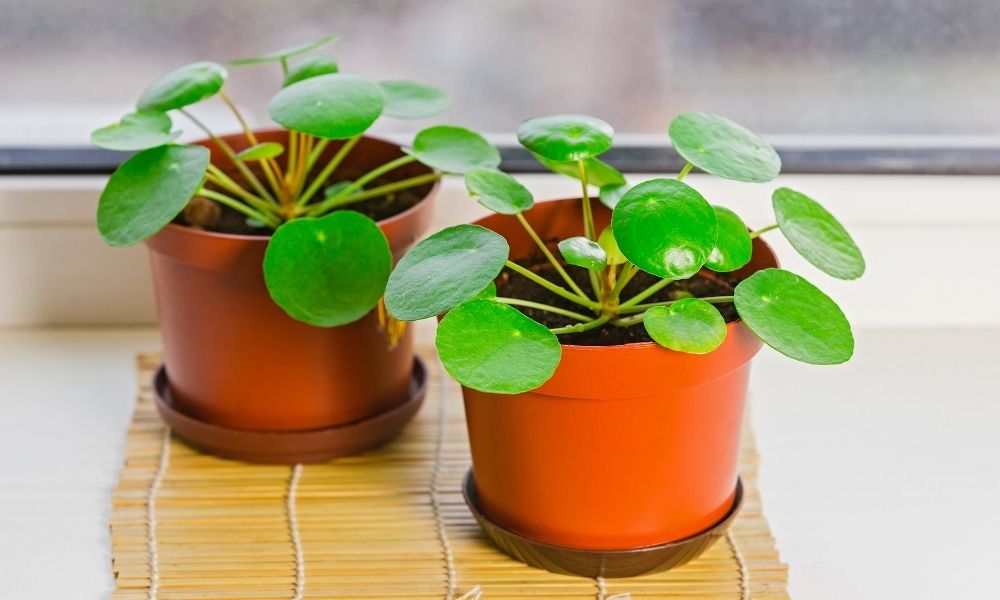
Are Pilea Plants Easy to Care For?
The Pilea Plant is a pretty hardy plant that isn’t too picky. This makes it pretty easy to care for! This plant is also very easy to propagate, which means you can easily have multiple around the home (or some beautiful gifts to give to family and friends).
Here is how to propagate your Pilea Plant:
- Look at the base of the plant below the central stalk to find baby Pilea Plants.
- Cut off a baby Pilea at the base, as close to the soil as you can. Make sure your blade is sanitized and clean beforehand.
- Place the baby Pilea in a small glass or jar of water, making sure that only the stem is submerged. You might need to trim off some leaves to make sure they aren’t rotting below the water.
- Make sure you put the jar in an area with bright indirect light.
- Keep the water fresh by changing it every few days.
- After a week or two, you should notice roots beginning to sprout.
- When the roots reach one inch, you should place them in a small pot with fresh soil. While you wait for the plant to take root, keep the soil moist.
Can You Grow a Pilea Plant Indoors and Outdoors?
This plant grows best inside, but it can be grown outside in USDA growing zone 10 if it’s in partial or full sun and the temperatures are consistently above 40 degrees Fahrenheit.
Zone 10 includes Southern California, Florida, and Hawaii. These are areas that have no risk of frost and have a consistently warm temperature. With so much sun exposure in these areas, you’ll need to make sure your Pilea Plant is getting plenty of water (more than it would need inside).
What Are the Benefits of a Pilea Plant?
The first thing you’ll notice about the Pilea Plant is its one-of-a-kind appearance. The thin, springy stems with large, circular leaves at the end give it an exotic look that will boost any decor it’s in. This is the perfect plant to have in the living room to add some life or in an office to give the space some inspiration.
The Pilea Plant is the perfect office buddy! Not only do plants purify the air and keep you feeling refreshed and healthy, but having a colorful, living thing can make you feel closer to nature. This will make you feel inspired, creative, and focused. Maybe add a Pilea Plant near where you do yoga as well for extra inspiration.
The Pilea Plant became popular in China before it spread everywhere else. This is where it got its nicknames, the Coin Plant and the Chinese Money Plant. It’s believed that the Pilea Plant will give your household better luck with money! To inspire financial success, place a coin in the Pilea Plant’s pot on top of the soil.
Related: Pothos Plant (Devil's Ivy): The Trailing Voice
We definitely can’t promise you any riches, but it’s worth a shot!
Proper Pilea Plant Care Tips
The Pilea Plant commonly lives to be about 10 years old. It can even reach two decades if it’s given the proper care. The Pilea Plant is a little pickier than other houseplants but is easy to take care of once you have the routine down. With the proper watering, soil, lighting, and temperature, your Coin Plant will thrive beautifully.
Choosing the Right Soil
Pilea Plants need well-draining soil that’s moderately rich. A potting mix with peat moss, leaf mold, and perlite would work perfectly. It’s very important that the soil drains properly because Pilea Plants will develop root rot if the soil remains soggy.
Finding the Right Pot
Just like the soil, it’s important that you find a pot that allows proper drainage. Make sure there are drainage holes. When potting a Pilea Plant, make sure the new pot is one or two inches larger than the previous pot. For example, a Pilea in a six-inch pot should be moved up to an eight-inch pot. Pilea Plants don’t like to be root-bound, so plan to repot your plant every two years or so.
Watering
When it comes to Pilea Plant care, you should water them once every one or two weeks. You’ll know it’s time to water your plant when the soil is dry. You don’t want to water the Pilea Plant if the soil is still moist. Always check the top two to three inches of soil. You’ll notice that the Pilea Plant will need to be watered more often when it’s in brighter light.
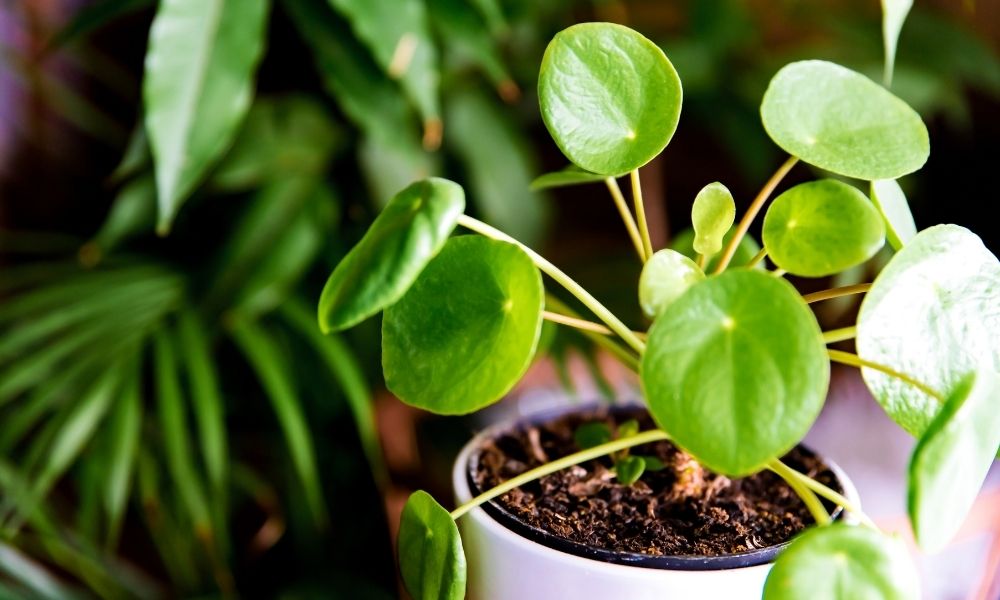
Feeding Your Pilea Plant
Most house plants, including the Pilea Plant, should be fertilized during the months they are growing. That’s usually spring through fall (avoiding feeding in winter). During this time, fertilize about once a month.
The fertilizer you feed your Pilea Plant should be an organic houseplant fertilizer. The package should have instructions for properly diluting and administering the fertilizer.
You can also use a slow-release fertilizer in the soil when you first purchase your plant. That means you won’t need to feed them for the first six months of bringing home the plant.
Placement and Lighting
Pilea Plants love bright light. Just make sure they are not in direct sunlight. Keep them in a room where there’s a lot of reflected sunlight. In the southern hemisphere, try a room on the northern side of your house and vise versa for northern hemisphere homes.
You will notice that your Pilea Plant is getting too much sunlight when the leaves start to take on a scorched look. If your plant isn’t getting enough light, the leaves will start to curl.
Humidity and Temperature
The Pilea Plant isn’t too picky about temperature. Your home can be anywhere from 55 degrees to 85 degrees Fahrenheit. Just make sure it never goes below 50 degrees.
Normal humidity is fine as well. You won’t need to add a humidifier or mist the Pilea Plant’s circular leaves. That’s what makes this interesting plant pretty low-key. It’s definitely flexible when it comes to temperature and humidity, making it great for most homes.
Pruning Pilea Plants
Pruning is important because trimming a plant encourages new, healthy growth. That means you want to cut away leaves that are withering or damaged. But you never want to over prune your Pilea Plant, so keep in mind that you should only trim 20% of the plant or less each time.
You should try to prune your Pilea Plant at the start of the growing season or in the winter. Try to pick the same time each year. You’ll have to prune your Pilea Plant a few times a year, removing dead leaves or excess branches. You can also prune your plant to keep them a certain shape or size. Look for signs of overgrowth and dead leaves or dead stems. These are the most important areas to prune when you begin. Brown leaves or dry leaves should be removed.
The Pilea’s thin, springy stems are very soft. Cutting them with shears might be too harsh. Instead, pinch them with your fingers. You can wear gardening gloves if you prefer. Pinch just above the leaf’s node and then pull to remove the stem tip.
After you’re done, cut back any overgrowth if you prefer to keep the Pilea Plant a specific shape or size. You can use pruning shears to do so, cutting any excess stem about 1/3 back. Try to cut at a 45-degree angle and as close to the primary stem as possible. This will help encourage new growth.
Here are some pruning mistakes to avoid:
- Pruning healthy leaves: Don’t remove green leaves! This might harm your plant’s ability to grow. Make sure the leaves you remove are dying, brown, or wilting. You can even just remove the browning part if it’s not a big part of the leaf.
- Pruning too much at a time: You should never remove more than 20% of the plant at a time. This will disrupt the Pilea’s growth cycle. It will also leave it looking bare.
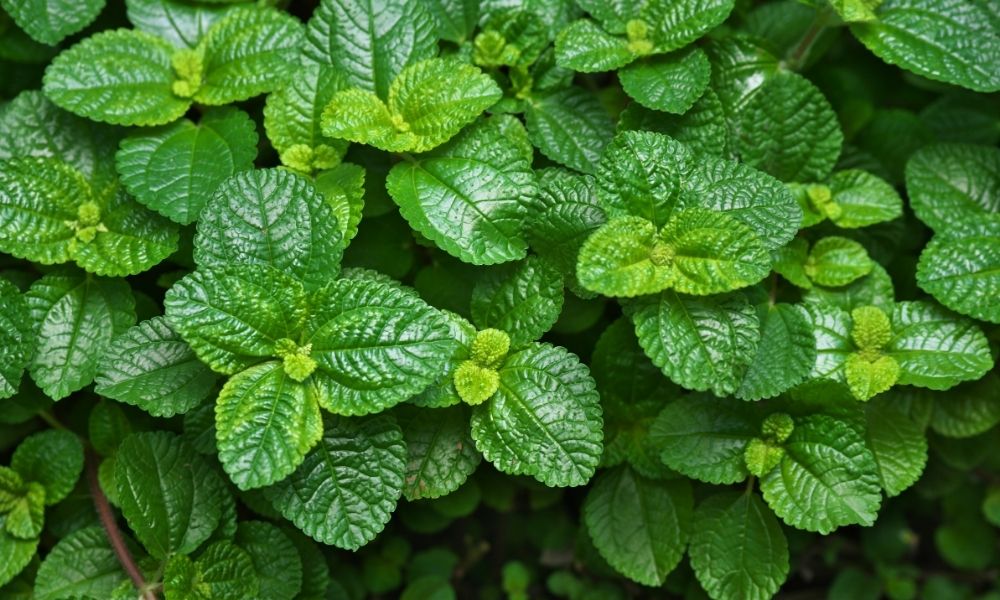
Common Pilea Plant Care Issues
The Pilea Plant is very expressive. You will always be able to tell if something is going on based on the Pilea Plant’s appearance. Here are some things to look out for to make sure your Pilea Plant is healthy and thriving.
Overwatering
Overwatering this plant is the number one killer. You’ll notice brown spots on the leaves or brown edges. After a while, these dead leaves will fall off. Always make sure that the soil is dry before watering your Pilea Plant again. Use your hand to check the first few inches of the soil. You should also make sure the pot has proper drainage holes and appropriate soil to encourage draining.
Underwatering
You’ll know that your Pilea Plant isn’t getting enough water if the leaves are drooping. Touch the first few inches of the soil with your finger. If it’s completely dry, you should give your Pilea Plant a drink.
Not Enough Light
If your Pilea Plant isn’t getting enough light, the leaves will start to dome or curl. It may also start to droop all over in general. Pilea Plants prefer a lot of light. It should be in an area that receives bright, indirect light. Low light conditions don’t allow your plant to thrive and will leave it unhealthy.
Too Much Light
Even though Pilea Plants loooove the light, there’s still such a thing as too much light. If the Pilea Plant is in direct sunlight too long, it will begin to look scorched. If the leaves are pale or discolored, it could be because the plant is getting too much sun.
How Do I Know if My Pilea Plant is Dying?
Root rot is one of the biggest killers of the Pilea Plant. This happens when their soil is too moist or wet. Consistently soggy soil will lead to root rot, which you can identify in a few different ways.
You’ll see mold on the surface of the soil. You’ll also see a discoloration of the plant. If you notice any of these signs, take the plant out of the pot and check the roots themselves. Rotting roots will be dark and feel mushy.
You can trim any rotten roots and repot your Pilea Plant with brand new soil in an attempt to save it. This is most definitely possible with the right care and attention.
Are Pilea Plants Poisonous?
Pileas are pet friendly plants! A lot of plants are poisonous to pets, especially cats. This can be tricky since cats always seem to get just about anywhere in the home. It’s hard to hide plants from a curious cat, especially once they know a room or plant is off-limits.
Luckily, the Pilea Plant is perfectly fine. Of course, you still don’t want a child or pet to chew up all the leaves. To keep the Pilea Plant looking vibrant and striking, you should keep it in an area where pets and kids don’t have access. But if you have an especially mischievous cat, you might want to skip putting a coin in the soil to avoid your cat swallowing it. If only they knew — if they would leave the Pilea Plant alone, you’d have so much money luck that you would be able to buy them endless tuna treats.
Final Thoughts – Pilea Plant Care
Pilea Plants are beautiful and unique, making them perfect for any decor. This plant is excellent to have in a living room by the sofa while you read – or in a hanging basket in the kitchen! You might also want to keep a Pilea Plant in the office on your desk for better focus and creativity.
This plant can easily thrive in most homes, just like the Calathea Rattlesnake, since it’s not picky about temperature or humidity. Just make sure that you consider proper Pilea plant care and provide the right amount of water and light! The Pilea Plant is also easy to propagate, meaning you can provide the gift of money success to all of your friends and family!
Related: Himalaya Care: Simple Tips & Tricks for a Unique Succulent


